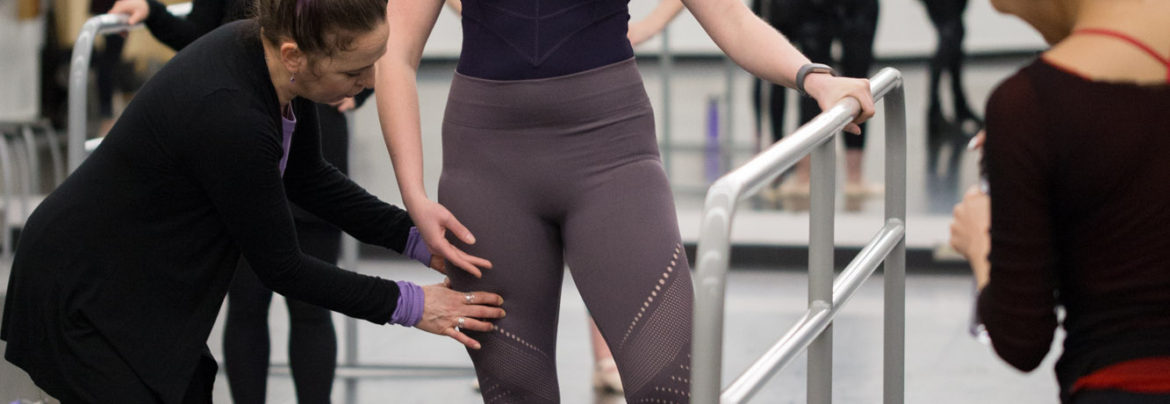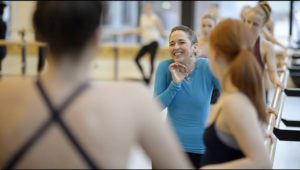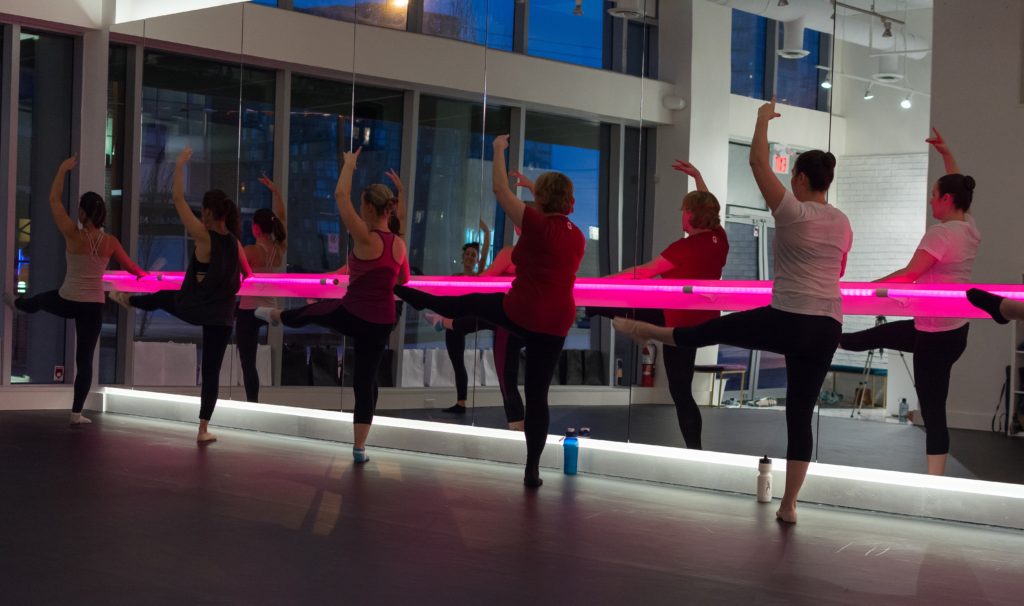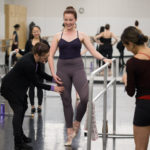
By Rebecca Karpus
Taking ballet classes as an adult may seem like a bit of a risk — unlike most types of fitness, dance is, after all, an art form. The moment your hand touches the barre, the piano begins to play and you take an invigorating breath with your first plié, you are wonderfully vulnerable. Professional and amateur dancers alike cathartically bare their souls throughout their ballet journeys, all the while benefitting from the physical exercise.
The advantages of taking ballet range from physical benefits (such as strength, mobility, endurance, coordination and alignment) to mental and spiritual benefits (such as cognitive development, musicality and creativity). Unfortunately, many adults find it difficult to muster up the courage to attend their first class. “I’m too old, too big, too clumsy” is a common belief, as though only the young, slim and agile can enjoy ballet. While it might be easier on the body and mind for the young, many return to, and some even start, ballet in their 60s and 70s and successfully progress with their own goals.

Linda Arkelian, a former dancer who teaches adult ballet classes at both Vancouver’s Dance Centre and a senior’s centre, says that while many of her students are hesitant during their first class, the music tends to immediately soothe any nerves. She feels that adult ballet can be therapeutic: using a metaphor of a mirror, her goal for adult dancers who arrive with emotional baggage from past training is to throw those preconceived notions of oneself onto the floor, and then rearrange the shards into their own empowering reality.
Although adults do not usually learn ballet with the intention of becoming professionals, their training is still worth taking seriously. Arkelian fuels the creative growth of her adult dancers by occasionally holding special classes called Bringing Artists Together. In these, to provide inspiration, she invites professional dancers to join class alongside the students, with live piano accompaniment, while visual artists, a photographer and a videographer explore their own perspectives of the dance. In this creative atmosphere, the classes are less about the flexibility of the body and more about “the flexibility of the mind,” she says.
Suzy Kaitman, the founder of Vancouver’s Ballet Lounge, a dance school specifically for adults, also feels passionately about providing adults with a fulfilling ballet education. This includes taking Royal Academy of Dance exams, learning choreography and classical variations, dancing in “reverse recitals” where the students’ children and family members watch them perform and, most notably, putting students with adequate foot strength on pointe. Kaitman’s choice to offer pointe work demonstrates her zeal to enhance the physicality and technique of her adult curriculum.

Under the assumption that it is too late in life to start or restart their ballet training, some adults opt for other fitness options. One of those is barre fitness, a ballet-inspired workout using a barre. Traditionally, ballet classes are led with piano accompaniment, and exercises develop from barre, to the centre, and then travelling through the space. Barre classes do not incorporate travelling exercises, instead focusing on barre and floor exercises, sometimes introducing other equipment such as exercise balls and bands. Although music usually accompanies the workout, the goal is not developing participants’ musicality, but to fuel the repetition of isometric movements. Barre classes are a compelling form of fitness, but with the right teacher and mindset, adult ballet can be as approachable as barre fitness or any other exercise alternative, such as Pilates or a gym membership.
Due to restrictions on live classes because of COVID-19, many adult ballet classes are being offered virtually, or in-person with reduced numbers and physical distancing protocols. Learning from the comfort of home, or with a smaller than usual class size may actually put some beginners at ease. For those keen to receive feedback, today’s technology permits an interactive online learning experience, where instructors can provide individualized corrections and students can ask questions, all in real time using webcam and microphones found on most computers or other devices.
If joining ballet as an adult still sounds intimidating, please take a moment to imagine: a studio of focused students, all showing up at the same place and time to move together through the space in tandem with music, letting go of life’s concerns and experiencing the dynamic energy of artistic expression.
Rebecca Karpus is artistic administrator at Ballet BC and a freelance writer. She continues to enjoy dance as a recreational pursuit today.

Tags: Ballet Lounge ballet students Canadian dance news COVID-19 Linda Arkelian online dance classes Suzy Kaitman The Dance Centre Vancouver BC
